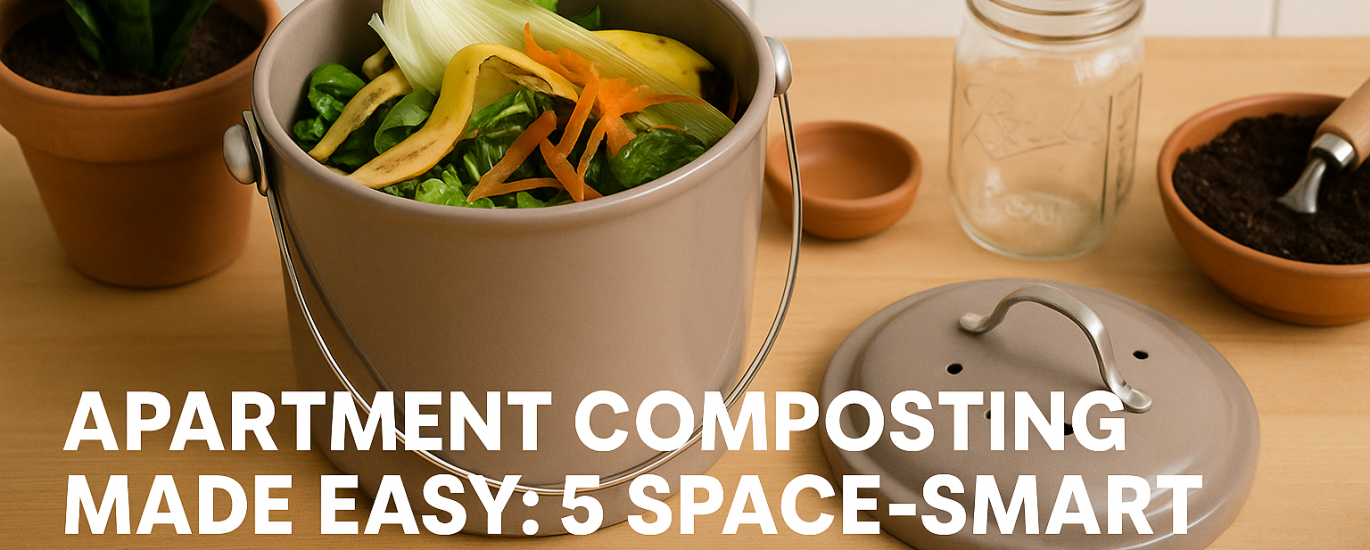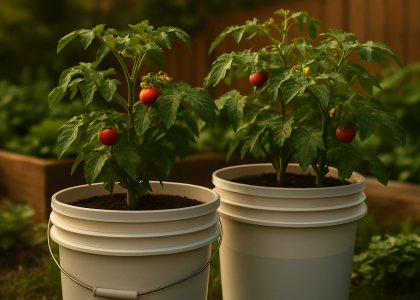Looking to turn your kitchen scraps into garden gold but short on space? Composting doesn't require a backyard. Whether you're in a high-rise apartment or a small studio, here are five tried-and-true methods to compost successfully in tight urban settings—odor-free, stylish, and neighbor-approved.
Editor's Top Pick: Bokashi Bucket
Best for: Small apartments with limited ventilation
How it works: Bokashi is a Japanese method that uses a bran inoculated with beneficial microbes to ferment food waste in an airtight bin—no oxygen required.
What you can compost: Everything, even meat and dairy!
Starter tip: Once full, bury the pre-compost in a large planter or deliver it to a community garden for final decomposition.
Why we love it: Compact, fast, and nearly odorless when done right.
Anaerobic fermentation (no-oxygen environment) = perfect for small, shared spaces.
Worm Bin (Vermicomposting): Red Wigglers to the Rescue
Best for: Gardening enthusiasts and kids
How it works: Red wigglers (Eisenia fetida) feast on kitchen scraps, producing rich, soil-like castings.
What you can compost: Veggie peels, coffee grounds, paper towels (unbleached)
Setup: Use a breathable plastic or wooden bin with moist shredded newspaper bedding. Keep it under the sink or in a dark cabinet.
FAQ: What if I see fruit flies? Freeze your scraps before adding, and always bury them well.
Electric Countertop Composters: Instant, Sleek, and Modern
Best for: Busy, tech-savvy apartment dwellers
How it works: These appliances dry, grind, and cool your scraps in just a few hours, creating a stable, odor-free material.
What you can compost: Most fruit, veggie, and grain scraps (check your model's guide)
Quick tip: Empty regularly and mix output into soil to improve texture and nutrients.
Editor’s Note: While not true compost, it’s a great pre-treatment for balcony pots or planters.
Balcony Bin Composting: Sunlight & Simplicity
Best for: Apartments with outdoor access
How it works: Layer “greens” (wet kitchen scraps) and “browns” (dry materials like shredded paper) in a lidded bin. Stir weekly to aerate.
What you can compost: All plant-based kitchen waste
Space-saver idea: Stackable bins or rolling bins for tight corners
🔄 Maintain a 2:1 browns-to-greens ratio to keep smells away and balance microbes.
Shared Community Composting: Collective Power
Best for: Eco-conscious urbanites and social butterflies
How it works: Store scraps in a sealed pail and drop them at a local garden, farmer’s market, or compost hub.
What you can compost: Depends on local rules (usually no meat/dairy)
Find a drop-off: Use apps like ShareWaste or check your city’s zero-waste programs.
Pro Tip: Join your building’s sustainability group or start your own compost share circle.
Quick Guide: What You Can and Can’t Compost Indoors
| ✅ Compostable | ❌ Avoid Indoors |
| Fruit and veggie scraps | Greasy/oily food |
| Coffee grounds & tea leaves | Dairy & meat (except Bokashi) |
| Shredded paper, cardboard | Pet waste |
| Eggshells (crushed) | Plastic, metal, glass |
Tools & Setup Cheat Sheet
- Odor Control: Freeze scraps until compost day
- Moisture Tip: Should feel like a wrung-out sponge
- Roommate-Proof: Label your bins and set a shared schedule
👉 Get the Printable Kit at Greenmuse.io
Want to See It in Action?
Save this blog on Pinterest for your eco-living board
Composting from your apartment isn’t just possible—it’s empowering, sustainable, and fun. Choose the system that suits your lifestyle, and start transforming waste into something beautiful today.





